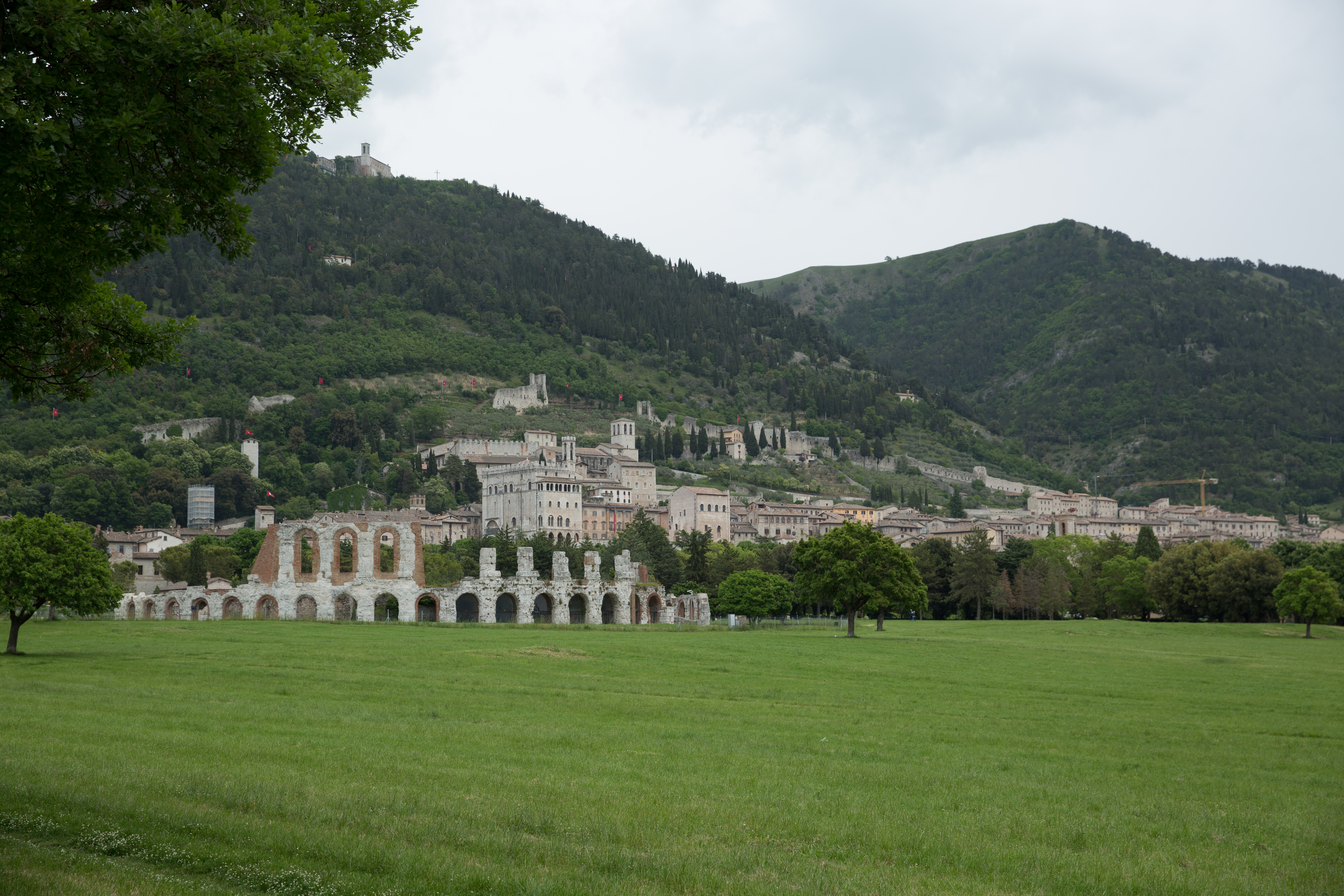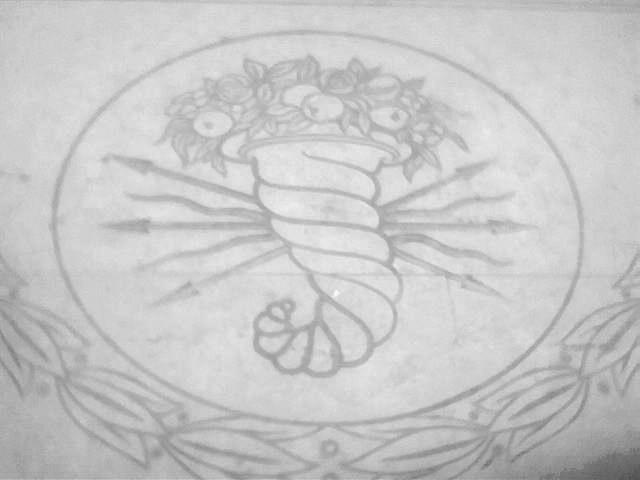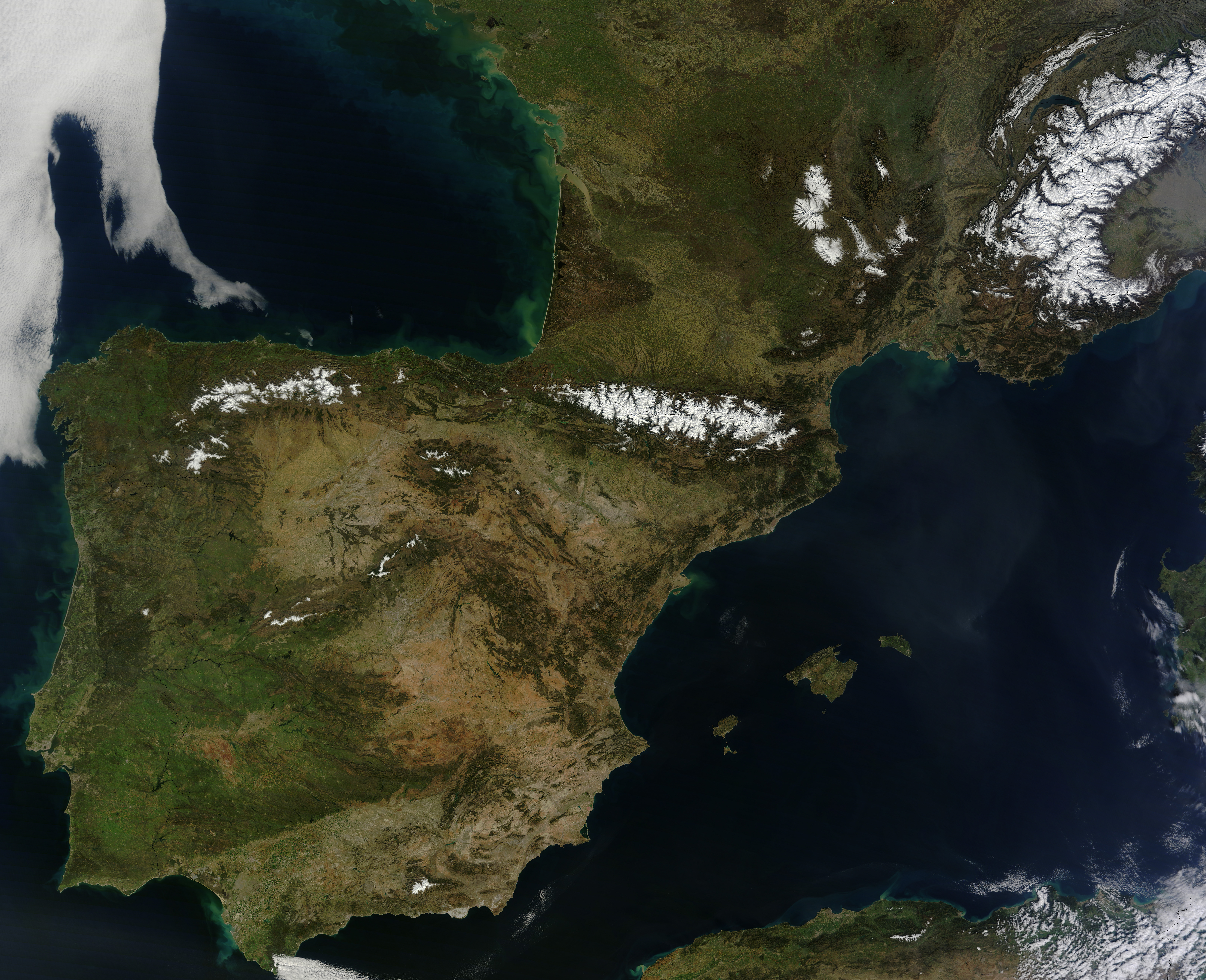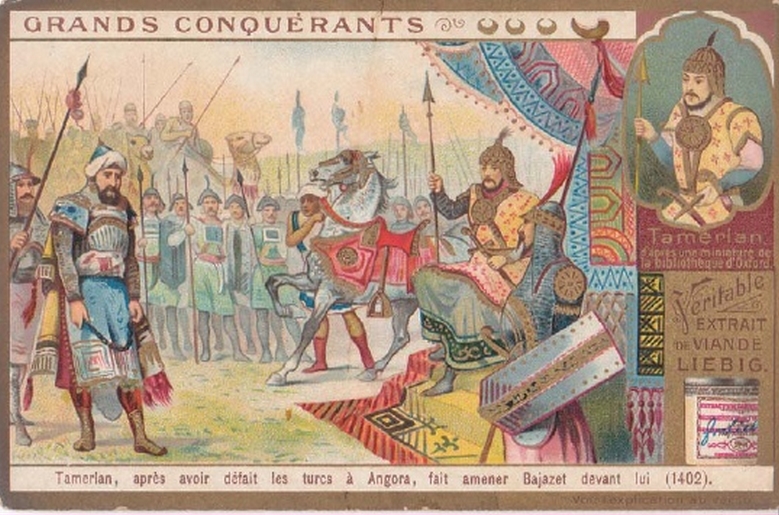|
Lustreware
Lustreware or lusterware (respectively the spellings for British English and American English) is a type of pottery or porcelain with a metallic glaze that gives the effect of iridescence. It is produced by metallic oxides in an overglaze finish, which is given a second firing at a lower temperature in a " muffle kiln", or a reduction kiln, excluding oxygen. The technique of lustreware on pottery was first developed in Mesopotamia (modern Iraq) in the early 9th century. Initially mostly decorated with geometric patterns, by the 10th century an Iraqi style with the design dominated by one or two large figures developed. After the Fatimid conquest of Egypt in 969, it became a great centre of lustreware production until the Fatimid Caliphate fell in 1171, soon after the potter's quarter of the capital Fustat (Cairo) was burned in 1169. It is thought that the Fustat potters dispersed to both Syria and Persia, and lustreware appears there about this time; later the devastatin ... [...More Info...] [...Related Items...] OR: [Wikipedia] [Google] [Baidu] |
Hispano-Moresque Ware
Hispano-Moresque ware is a style of initially Islamic pottery created in Al-Andalus, which continued to be produced under Christian rule in styles blending Islamic and European elements. It was the most elaborate and luxurious pottery being produced in Europe until the Italian maiolica industry developed sophisticated styles in the 15th century, and was exported over most of Europe. The industry's most successful period was the 14th and 15th centuries. Around 711, the Moors conquered part of Spain. Over the following centuries, they introduced two ceramic techniques to Europe: glazing with an opaque white tin-glaze, and lustreware, which imitates metallic finishes with iridescent effects. Hispano-Moresque wares use both processes, applying the paint as an overglaze which is then fired again. Lustreware was a speciality of Islamic pottery, at least partly because the use of drinking and eating vessels in gold and silver, the ideal in ancient Rome and Persia as well a ... [...More Info...] [...Related Items...] OR: [Wikipedia] [Google] [Baidu] |
Fustat
Fusṭāṭ ( ar, الفُسطاط ''al-Fusṭāṭ''), also Al-Fusṭāṭ and Fosṭāṭ, was the first capital of Egypt under Muslim rule, and the historical centre of modern Cairo. It was built adjacent to what is now known as Old Cairo by the Rashidun Muslim general 'Amr ibn al-'As immediately after the Muslim conquest of Egypt in AD 641, and featured the Mosque of Amr, the first mosque built in Egypt. The city reached its peak in the 12th century, with a population of approximately 200,000.Williams, p. 37 It was the centre of administrative power in Egypt, until it was ordered burnt in 1168 by its own vizier, Shawar, to keep its wealth out of the hands of the invading Crusaders. The remains of the city were eventually absorbed by nearby Cairo, which had been built to the north of Fustat in 969 when the Fatimids conquered the region and created a new city as a royal enclosure for the Caliph. The area fell into disrepair for hundreds of years and was used as a rubbish d ... [...More Info...] [...Related Items...] OR: [Wikipedia] [Google] [Baidu] |
Cairo
Cairo ( ; ar, القاهرة, al-Qāhirah, ) is the capital of Egypt and its largest city, home to 10 million people. It is also part of the largest urban agglomeration in Africa, the Arab world and the Middle East: The Greater Cairo metropolitan area, with a population of 21.9 million, is the 12th-largest in the world by population. Cairo is associated with ancient Egypt, as the Giza pyramid complex and the ancient cities of Memphis and Heliopolis are located in its geographical area. Located near the Nile Delta, the city first developed as Fustat, a settlement founded after the Muslim conquest of Egypt in 640 next to an existing ancient Roman fortress, Babylon. Under the Fatimid dynasty a new city, ''al-Qāhirah'', was founded nearby in 969. It later superseded Fustat as the main urban centre during the Ayyubid and Mamluk periods (12th–16th centuries). Cairo has long been a centre of the region's political and cultural life, and is titled "the city of a thousa ... [...More Info...] [...Related Items...] OR: [Wikipedia] [Google] [Baidu] |
Deruta
Deruta is a hill town and ''comune'' in the Province of Perugia in the Umbria region of central Italy. Long known as a center of refined maiolica manufacture, Deruta remains known for its ceramics, which are exported worldwide. History Probably built upon Roman foundations, Deruta's name in its early variants (Ruto, Ruta, Rupta, Direpta and Diruta) all signify the “ruin” of this strategic site caused by the 6th-century Gothic War and the Lombard invasion. The Medieval commune that rose from these ruins had its own charter in the 13th century and was governed from its own Palazzo of the Consuls, but in fact Deruta has been under the dominion of neighboring Perugia since the 11th century, and has largely participated in Perugia's vicissitudes. The town's fortifications date from the 12th century, when it was an outpost in Perugia's marches, facing the rival town of Todi. In 1465, under a new agreement with Perugia, the magistrate sent from Perugia would govern with the cons ... [...More Info...] [...Related Items...] OR: [Wikipedia] [Google] [Baidu] |
Gubbio
Gubbio () is an Italian town and ''comune'' in the far northeastern part of the Italian province of Perugia ( Umbria). It is located on the lowest slope of Mt. Ingino, a small mountain of the Apennines. History The city's origins are very ancient. The hills above the town were already occupied in the Bronze Age. As ''Ikuvium'', it was an important town of the Umbri in pre-Roman times, made famous for the discovery there in 1444 of the Iguvine Tablets, a set of bronze tablets that together constitute the largest surviving text in the Umbrian language. After the Roman conquest in the 2nd century BC – it kept its name as ''Iguvium'' – the city remained important, as attested by its Roman theatre, the second-largest surviving in the world. Gubbio became very powerful in the beginning of the Middle Ages. The town sent 1000 knights to fight in the First Crusade under the lead of Girolamo Gabrielli, and according to an undocumented local tradition, they were the first to penetra ... [...More Info...] [...Related Items...] OR: [Wikipedia] [Google] [Baidu] |
Maiolica
Maiolica is tin-glazed pottery decorated in colours on a white background. Italian maiolica dating from the Renaissance period is the most renowned. When depicting historical and mythical scenes, these works were known as ''istoriato'' wares ("painted with stories"). By the late 15th century, multiple locations,L. Arnoux, 1877, British Manufacturing Industries – Pottery "Most of the Italian towns had their manufactory, each of them possessing a style of its own. Beginning at Caffagiolo and Deruta, they extended rapidly to Gubbio, Ferrara, and Ravenna, to be continued to Casteldurante, Rimini, Urbino, Florence, Venice, and many other places." mainly in northern and central Italy, were producing sophisticated pieces for a luxury market in Italy and beyond. In France maiolica developed as faience, in the Netherlands and England as delftware, and in Spain as talavera. In English the spelling was anglicised to ''majolica'' but the pronunciation usually preserved the vowel with ... [...More Info...] [...Related Items...] OR: [Wikipedia] [Google] [Baidu] |
Barcelona
Barcelona ( , , ) is a city on the coast of northeastern Spain. It is the capital and largest city of the autonomous community of Catalonia, as well as the second most populous municipality of Spain. With a population of 1.6 million within city limits,Barcelona: Población por municipios y sexo – Instituto Nacional de Estadística. (National Statistics Institute) its urban area extends to numerous neighbouring municipalities within the Province of Barcelona and is home to around 4.8 million people, making it the fifth most populou ... [...More Info...] [...Related Items...] OR: [Wikipedia] [Google] [Baidu] |
Valencia
Valencia ( va, València) is the capital of the autonomous community of Valencia and the third-most populated municipality in Spain, with 791,413 inhabitants. It is also the capital of the province of the same name. The wider urban area also comprising the neighbouring municipalities has a population of around 1.6 million, constituting one of the major urban areas on the European side of the Mediterranean Sea. It is located on the banks of the Turia, on the east coast of the Iberian Peninsula, at the Gulf of Valencia, north of the Albufera lagoon. Valencia was founded as a Roman colony in 138 BC. Islamic rule and acculturation ensued in the 8th century, together with the introduction of new irrigation systems and crops. Aragonese Christian conquest took place in 1238, and so the city became the capital of the Kingdom of Valencia. The city's population thrived in the 15th century, owing to trade with the rest of the Iberian Peninsula, Italian ports and other loca ... [...More Info...] [...Related Items...] OR: [Wikipedia] [Google] [Baidu] |
Iberian Peninsula
The Iberian Peninsula (), ** * Aragonese and Occitan: ''Peninsula Iberica'' ** ** * french: Péninsule Ibérique * mwl, Península Eibérica * eu, Iberiar penintsula also known as Iberia, is a peninsula in southwestern Europe, defining the westernmost edge of Eurasia. It is principally divided between Spain and Portugal, comprising most of their territory, as well as a small area of Southern France, Andorra, and Gibraltar. With an area of approximately , and a population of roughly 53 million, it is the second largest European peninsula by area, after the Scandinavian Peninsula. Name Greek name The word ''Iberia'' is a noun adapted from the Latin word "Hiberia" originating in the Ancient Greek word Ἰβηρία ('), used by Greek geographers under the rule of the Roman Empire to refer to what is known today in English as the Iberian Peninsula. At that time, the name did not describe a single geographical entity or a distinct population; the same name was ... [...More Info...] [...Related Items...] OR: [Wikipedia] [Google] [Baidu] |
Al-Andalus
Al-Andalus translit. ; an, al-Andalus; ast, al-Ándalus; eu, al-Andalus; ber, ⴰⵏⴷⴰⵍⵓⵙ, label= Berber, translit=Andalus; ca, al-Àndalus; gl, al-Andalus; oc, Al Andalús; pt, al-Ândalus; es, al-Ándalus () was the Muslim-ruled area of the Iberian Peninsula. The term is used by modern historians for the former Islamic states in modern Spain and Portugal. At its greatest geographical extent, it occupied most of the peninsula and a part of present-day southern France, Septimania (8th century). For nearly a hundred years, from the 9th century to the 10th, al-Andalus extended its presence from Fraxinetum into the Alps with a series of organized raids and chronic banditry. The name describes the different Arab and Muslim states that controlled these territories at various times between 711 and 1492. These boundaries changed constantly as the Christian Reconquista progressed,"Para los autores árabes medievales, el término Al-Andalus designa la totalidad ... [...More Info...] [...Related Items...] OR: [Wikipedia] [Google] [Baidu] |
Timurid Conquests And Invasions
Timurid conquests and invasions started in the seventh decade of the 14th century with Timur's control over Chagatai Khanate and ended at the start of the 15th century with the death of Timur. Due to the sheer scale of Timur's wars, and the fact that he was generally undefeated in battle, he has been regarded as one of the most successful military commanders of all time. These wars resulted in the supremacy of Timur over Central Asia, Persia, the Caucasus and the Levant, and parts of South Asia and Eastern Europe, and also the formation of the short-lived Timurid Empire. Scholars estimate that his military campaigns caused the deaths of 17 million people, amounting to about 5% of the world population at the time. Timur gained power over the Western Chagatai Khanate (Transoxiana) after defeating Amir Husayn, the regent of the Chagatai Khanate, at the Battle of Balkh but the laws laid down by Genghis Khan prevented him from becoming Khagan in his own right because he was not dir ... [...More Info...] [...Related Items...] OR: [Wikipedia] [Google] [Baidu] |
.jpg)






